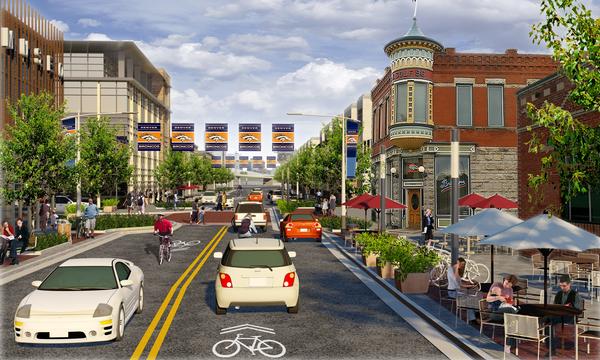There are essentially four models for human social interaction, according to some: communal sharing, authority ranking, equality matching, and market pricing. That seems a little bit like academic speak, so let’s break it down into more manageable categories. In terms of work, Art Markman — a professor at UT-Austin and author of a book called Smart Change — looks at it along three lines:
- Strangers
- Neighbors
- Family
What do we want to pursue at work?
Markman notes (and I’d agree) that strangers and family are dysfunctional models for work. In a strangers-based model, everything basically has to be a sale (“fee-for-service”), because the relationships aren’t really developed at all. (A little more on that here.) Family is a bad model too — first of all, what family do you know that isn’t at least 50 percent dysfunctional and off the rails in their own way? And secondly, the way “family” dynamics tend to work is that certain people can skate more easily — think of the “bad cousin” or the “underachieving brother,” still propped up by others decades later. It happens all the time. (Lest you think I’m taking out some of my own issues on this post, I’m actually an only child.)
So the logical idea, then, is that work should be treated as akin to neighbors. As Markman explains:
But with our neighbors, we try to balance what we do for them and what we get from them over time. We construct covenants in which everyone shares a common vision and agrees to do what they can to work toward these common interests.
In a healthy workplace, neighbor-employees work hard, secure in the knowledge that the organization is looking out for them. The organization succeeds because its employees put in a reasonable amount of extra time and effort for each other.
Two problems here:
1. This description above almost never actually happens. An organization’s goal is to make money, typically. Money comes from products and processes, in the mind of most people. The actual people that implement those products and processes are interchangeable. I’ve written about this probably 9,000 different times on this blog. Here’s one example.
2. Many managers at companies tend to still refer to their teams/departments as “a family.” I just did a scan in my head. I’ve had six different bosses say that about their team; I’ve only had about 10 total bosses in my life. 60 percent. Small sample size, sure … but that’s something.
I like the neighborhood idea because it involves people you’re not necessarily best friends with — very few people are BFF with their neighbors, although it does happen — but you have a shared responsibility with. Your kids play on the same block, you leave for a trip and you need someone to check your house, and information tends to be shared more organically about the neighborhood (at least as compared to how information tends to get shared at work).
Also, this is interesting in terms of breaking down silos — neighborhoods, as a concept, tend to involve a few different streets/subsections grouped together. People on “Lancaster Street” may have different interests and ways of doing things than people on “Herman Street,” but on certain issues, they still need to work together. Maybe Lancaster is a more expensive street, so those people are richer — but maybe both streets zone to the same school, so all their kids are together. That’s basically the same situation as marketing (which generates revenue) having to work with HR (which doesn’t), in some ways. (It’s a stretch, but it’s there.)
Markman talks about training as a way for organizations to support employees, just like neighborhoods support each other. I’d agree with that too. Training is a huge deal — it separates good companies from great ones. Yet a lot of companies don’t do it, most tend to fire training personnel first when money gets tight, and I think a lot of managers view going to trainings as people slacking off. (Similar arguments to why people don’t like to let others work remotely.)
I’m not saying that construing work as a neighborhood would change all the problems inherent in work, but it could be a simple start, right? These people aren’t your family. They aren’t necessarily your friends. They aren’t strangers. They’re basically a group of people you have commonalities with, proximity to, and some shared interests around. You don’t have to love them, you don’t have to run from them, but you do need to find ways to work with and tolerate them. That’s a neighborhood.
The elephant in the room here is that often neighbors get in stupid fights about overhanging trees and shit like that, and that mimics pretty much every power clash in a meeting you see in corporate America too. So maybe the analogy really does work!
